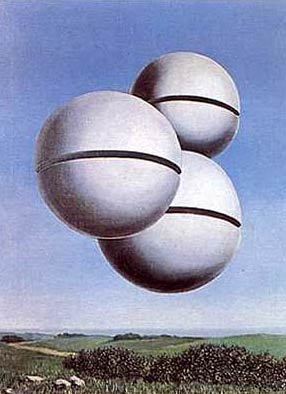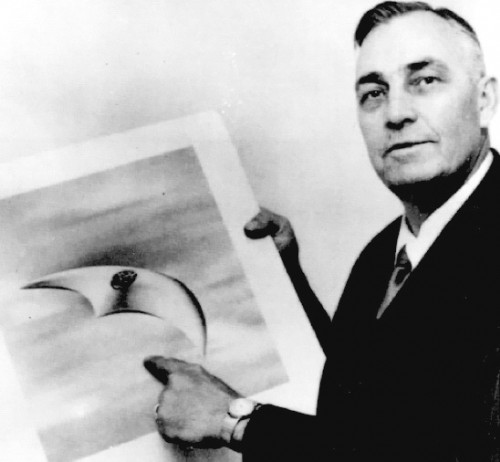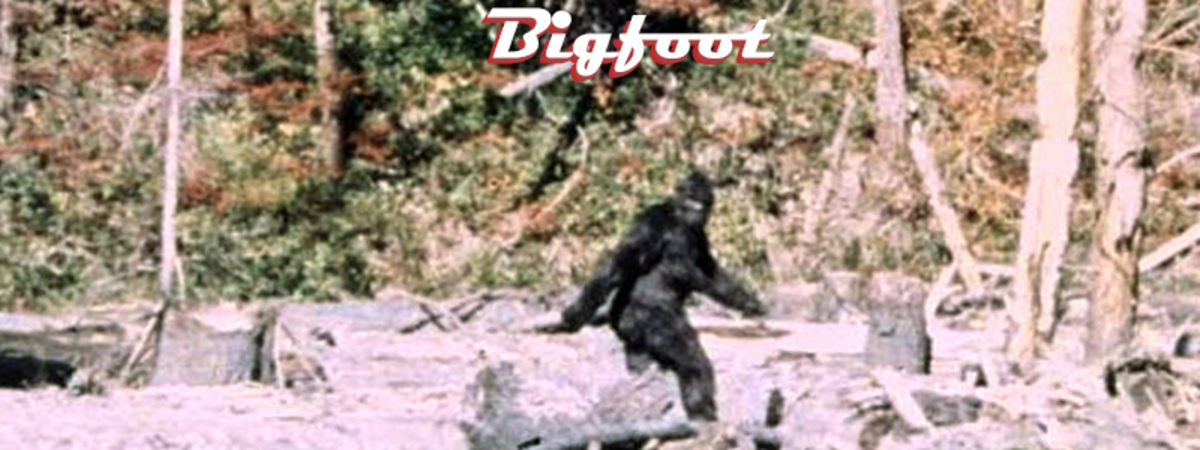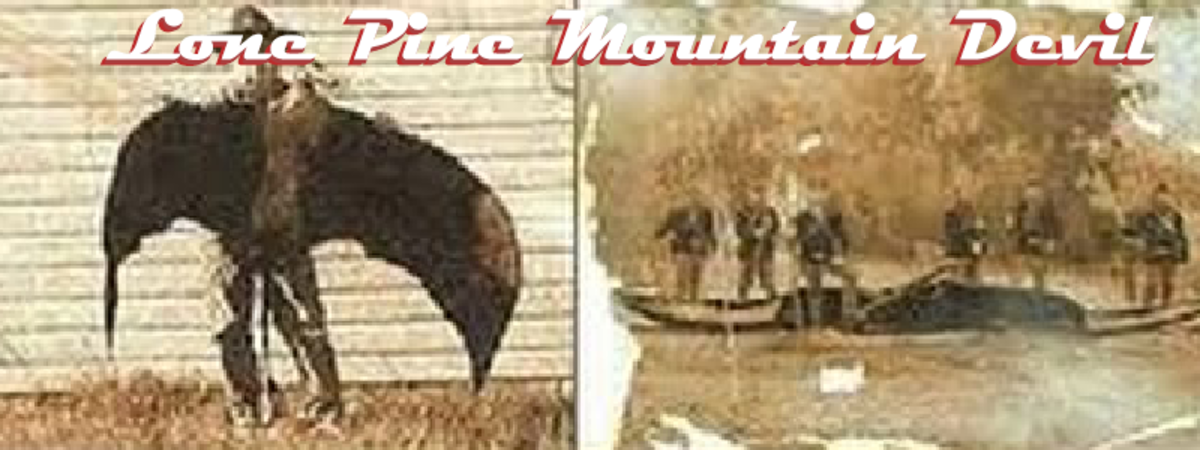- HubPages»
- Education and Science»
- Sociology & Anthropology»
- Folklore & Mythology»
- Legendary Creatures & Cryptids»
- Forest Creatures
What Is the Link that Connects Alien & Bigfoot Sightings?

Tapping Into the ET Hypothesis
Ufology is often said to have started with Air Force pilot Ken Arnold's sighting of a group of unidentified flying objects on June 24th 1947.
The objects, which Arnold said moved much faster than any known conventional aircraft, were convex in shape, with one of them shaped like a crescent. Arnold described the objects as moving like "saucers skipping over water."
The press quickly picked up on this phrase, dubbing the objects themselves "flying saucers," even though Arnold never actually called them that.
Later that same year, on July 8, the U.S. Air Force issued a press release stating that the 509th bomb group had recovered a 'flying disk' from a ranch just outside Roswell, New Mexico. The next day, another Air Force press release was issued stating that the recovered craft was actually an experimental radar-tracking balloon, not a flying disk. A photo of Officer Jessie Marcel holding pieces of the balloon was released and printed in newspapers across the U.S.
What many people do not realize however, is that by the time the back-to-back Roswell press releases and the Marcel photo hit the papers, the American populace was already fixated on the notion of flying saucers and possible invasion of the Earth by alien creatures from outer space. The idea was not new.
On October 30th of 1938, for example, actor Orson Welles staged a CBS radio version of H.G. Well's famous alien invasion novel, War of the Worlds . Even though the show started with a disclaimer, everything that followed was broadcast as if it was happening in real time.
So realistic was the broadcast, that people who tuned in late fled their homes, police phone lines lit up all down the Eastern seaboard, freeways were jammed with NJ residents trying to escape the attack, brawls and panics broke out all over, and one person even committed suicide.
Although CBS radio later apologized for the incident, the response of the general public made it obvious that the possibility of such an attack did not seem at all like science fiction to ordinary people.
In fact, the reason H.G. Wells published War of the Worlds in 1898 was that he knew it would play to the Victorian fascination with life on Mars and the possibility of a Martian invasion of Earth. During the Victorian era, even top scientists took for granted that intelligent life on Mars existed, and most likely cities and structures as well (Google 'Martian canals' for more info).
So to say that ufology started with Kenneth Arnold is a little misleading.
After the Orson Welles incident, both the U.S. and the Soviet Union became very interested in the possible military applications of an announced interstellar invasion. The idea that a huge nation could be practically shut down in mere hours due to an outer space panic got the attention of military thinkers on both sides in a big way.
During this same period, the nuclear arms race was already in full swing, the space race began, and supersonic aircraft were being developed by both the Soviets and the American military.
The arms race, the Cold War between Russia and the U.S., the military interest in the applications of disinformation and alien panics, and the public fascination with alien invaders created the perfect climate for the creation of ufology and belief in flying saucers and government cover ups.
So when Kenneth Arnold first reported his fleet of convex objects that skipped "like saucers across water", the American public was already well-primed to jump to the conclusion that any and all such anomalies were spacecraft piloted by intelligent alien beings from some other world.
And the U.S. and Soviet militaries were fully prepared to feed and manipulate public perception to their own ends.

First Wave Ufologists and Military Disinformation
During the 1950s, Americans were so terrified of a Soviet invasion or the deployment of a Soviet bomb against the U.S. that grade school children in the U.S. participated in regular 'duck and cover' drills.
At the ring of a bell, children learned to hide under their desks with their heads tucked between their knees as if the bomb sirens had gone off.
U.S. military intelligence was terrified as well, not just of a Soviet nuclear attack, but also of the Soviet induction of an alien invasion panic in the U.S. populace, making it that much easier for Russia to invade the U.S. and win.
In one famous example, July of 1952 saw so many UFOs sighted over Washington D.C. that President Truman is said to have issued an order to shoot them down. Shortly after the D.C. flap ended, the Air Force released a pubic statement explaining that the UFOs were caused by temperature inversion, a rare phenomenon which can cause false blips on a radar screen.
No one was reassured.
It's hard to overstate or fully convey the paranoia that Americans lived with during the 50s and 60s unless you experienced it first hand.
Suffice it to say that for most of the 20th century, ufology was dominated by Americans--half of whom thought the government was hiding flying saucers, and the other half of whom were covert government agents infiltrating ufology circles and disseminating disinformation to scare the pants off the Soviets.
Even today, if you mention the term UFO in the U.S. you are almost sure to get a treatise on whether or not the person you mentioned it to believes in life on other planets.
The Cold War is over, yet most of America still automatically accepts the ET hypothesis--or else they laugh at the very idea and make fun of 'little green men from Mars.'
In fact, ever since the late 1970s a whole new school of ufologists and researchers have been putting forward a very different view, one in which the U.S. and its military paranoia plays a much less prominent role.
Second Wave Ufologists and Men Seeking Monsters
Most people looking for Bigfoot are cryptozoologists--self-financed enthusiasts looking for elusive animals that have been sighted, but for which no physical evidence exists, (except perhaps some controversial tracks and the occasional grainy film).
'Cryptids' is the technical term for these unproven animals--a group that includes Bigfoot, the Loch Ness Monster, Ogo Pogo, giant inland sharks, and more.
What connects Bigfoot and alien sightings? Second wave ufologist/monster hunters, that's what.
The thing about the first wave ufologists of the 50s and 60s is that most of them were middle-aged or older even back then. By the beginning of the new millennium, many of them had already died, and ufology had become successfully marginalized in the U.S.
Overseas however, the situation was very different and continues to be very different.
Britain declassified its military records of UFO sightings for public view in 2008. All of them.
France put together the first formal protocol for contact with an unknown extraterrestrial race in 2007. That report stated that while most UFO sightings could be explained by natural phenomena or conventional aircraft, no less than 25% could not, and since the French government did not know what caused that mysterious 25%, they could not rule out the possibility of interstellar visitors.
A plea for U.S. disclosure and cooperation was issued, not by a group of eccentric miscreants living in airstream trailers--but by the government of France.
At the same time, a new generation of researchers--many from Britain or Europe--began to connect UFOs to a wide spectrum of paranormal phenomena, including cryptid sightings, folk magic, and spiritism.
In his readable and often hilarious book, Three Men Seeking Monsters, paranormal researcher Nick Redfern describes a number of instances in which sightings of UFOs in Britain were accompanied by sightings of a large hairy ape, a wolflike man creature, a reptilian beast, or a beast of unknown origins.
Redfern was not the first to make this connection.
In 1970, ufologist John Keel published his first account of a beast seen before the collapse of the Point Pleasant bridge. Keel dubbed the beast "Mothman."
In a convoluted and astonishing story that deserves a hub (or a book!) of its own, Keel and his friend and arch rival Gray Davis raced to publish their own accounts of the local phenomena. Keel's account included concurrent UFO sightings, the Davis account did not.
Keel was a dark, odd man who was obsessed with conspiracy plots and government malfeasance, but after Point Pleasant he no longer believed that UFOs were from outer space.
Keel had a background in esoteric Eastern religious magical practice and at one time had been a magician himself, and Point Pleasant and the Mothman mess convinced him that UFOs were part of a paranormal phenomenon that included bright lights in the sky, perceived craft, little people, 'the grays', and cryptids.
Keel felt that we, as human beings, can't really know the motives of these 'aliens' anymore than we can know the motives of a grasshopper. But he had a bad feeling about it. (And most everything else, to be fair.)
Not long after Keel began to voice his doubts about the ET hypothesis, UFO researcher and data analyst Jacques Vallee began to write books voicing similar doubts. Vallee called again and again for untainted data collection and analysis of the phenomena, and openly criticized first wave ufologists for editing out 'the weird stuff' to make their sightings more palatable to mainstream science.
Vallee felt that the relentless focus on aeronautics and the space race was contaminating the data on UFOs, and felt certain that when 'the weird stuff' was left in, a very different picture would emerge. Like Keel, Vallee suspected that UFOs were of terrestrial origin and had more in common with other paranormal phenomena like spirit communication, fairies, cryptids, and ghosts than with interstellar space travel.
Mac Tonnies, one of the most exciting of the second wave ufologists wrote an excellent book called Cryptoterrestrials , in which he argues that fairy folk, the Fay, and the grays are all one and the same, and that, far from being creatures from outer space, they live right here among us, and always have. They present themselves as they think we want to see them, or as they feel like presenting themselves, for reasons they understand and we do not.
This was a very similar conclusion to the one reached by John Keel, or the one suggested as possible by Jacques Vallee.
Jacques Vallee and his followers are currently in the process of collecting unedited data on UFO and alien sightings from historical and literary documents. So far they have found accounts of these phenomena dating back to four thousand years B.C.
Right now, first wave ufology is in a sorry state and second wave ufology is just finding its feet. I hope the new research continues, since I personally believe it has a stronger chance of attracting serious scientific analysis than the first wave stuff, which is so contaminated by disinformation and spy versus spy nonsense that we may never know what really happened between 1938 and the 1980s.
One thing is sure: The U.S. is no longer the center of UFO inquiry.
And the rest of the world is not snickering.








